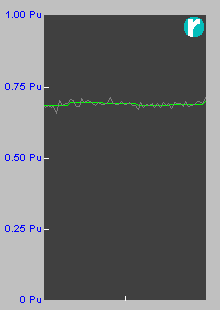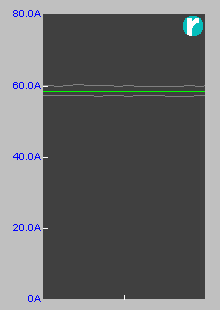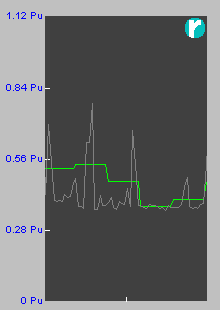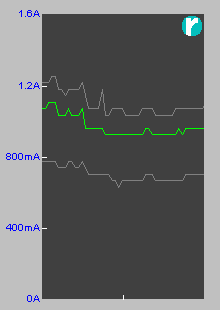|
Flicker, although directly related to quick-changing brilliance in lighting, has a relevance to electronic equipment too. This is especially true with direct rectification such as found with switch-mode power supplies. Most power supplies will comfortably ride through any short-term dip in voltage. The sudden rise in voltage, however, is where most issues lie. During the dip the capacitors will discharge to the point where the diodes again conduct, this based on the peak voltage at the time. When the voltage increases so does the peak and the entire input system is subjected to inrush without any form of inrush protection as such protection is usually based on Negative Temperature Coefficient Resistors which would be hot at the time of such inrush.
A further issue is the whole supply system is also subjected to this inrush current multiplied by the number of devices on that supply. If the load is predominantly resistive then the inrush is not as marked. If the load is predominantly hi-tech then the supply could be drastically flat-topped for a few cycles until all the capacitors are at the revised running voltage. This may only take a single half cycle, but the effect usually lasts two to three half cycles with the inrush decreasing with each cycle peak.
The main indicator to prompt investigation of the effects of flicker on electronic equipment is if major variations exist between Pst and Plt figures with some Pst values exceeding 1Pu, and unexplained large ratios (greater than 20%) between Maximum, Minimum, and Average values of the current trend in what should be a constant load. If both the Pst and Plt flicker levels at a site are similar and remain below 1Pu, and the current ratios do not indicate an issue, then it is usually safe to ignore flicker as a general site issue. However, because flicker is found to be low at a site incomer does not exclude equipment from damage within a site. The incoming impedance may be only a few milliohms, but can soon increase to as much as 0.5W owing to the site's electrical distribution system. If there should be a device with a high inrush on the same circuit as a delicate piece of electronic equipment, then there exists an increased risk of damage with the sudden voltage changes during the inrush of the heavier gear. The components that are stressed during such dips are covered in the section Unsuitable Inrush Protection. Simply replace the action of the PC being turned off and back on with the dip mentioned above. Continued reading through to Input Rectifier Damage should give a better understanding of typical failures.
© 25.04.03 |
 INTERPRETING THE READINGS:
INTERPRETING THE READINGS:


